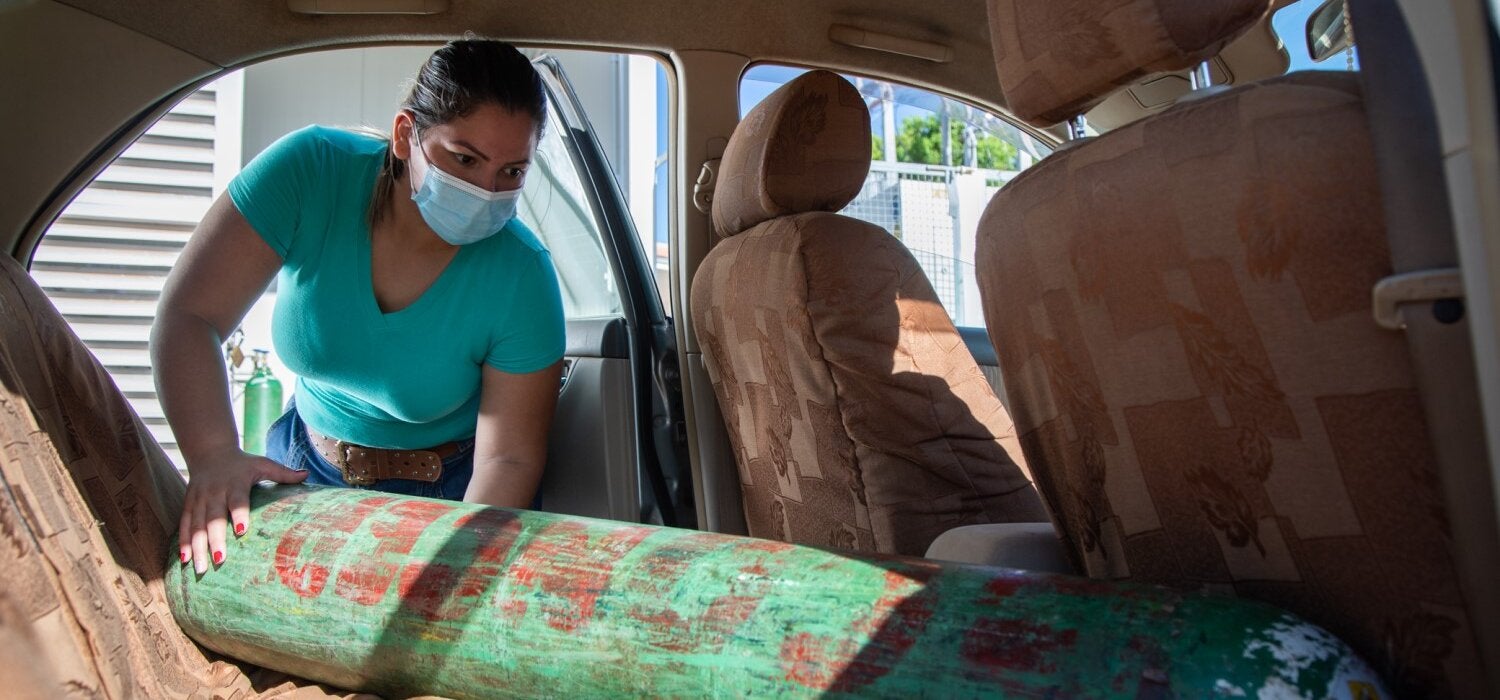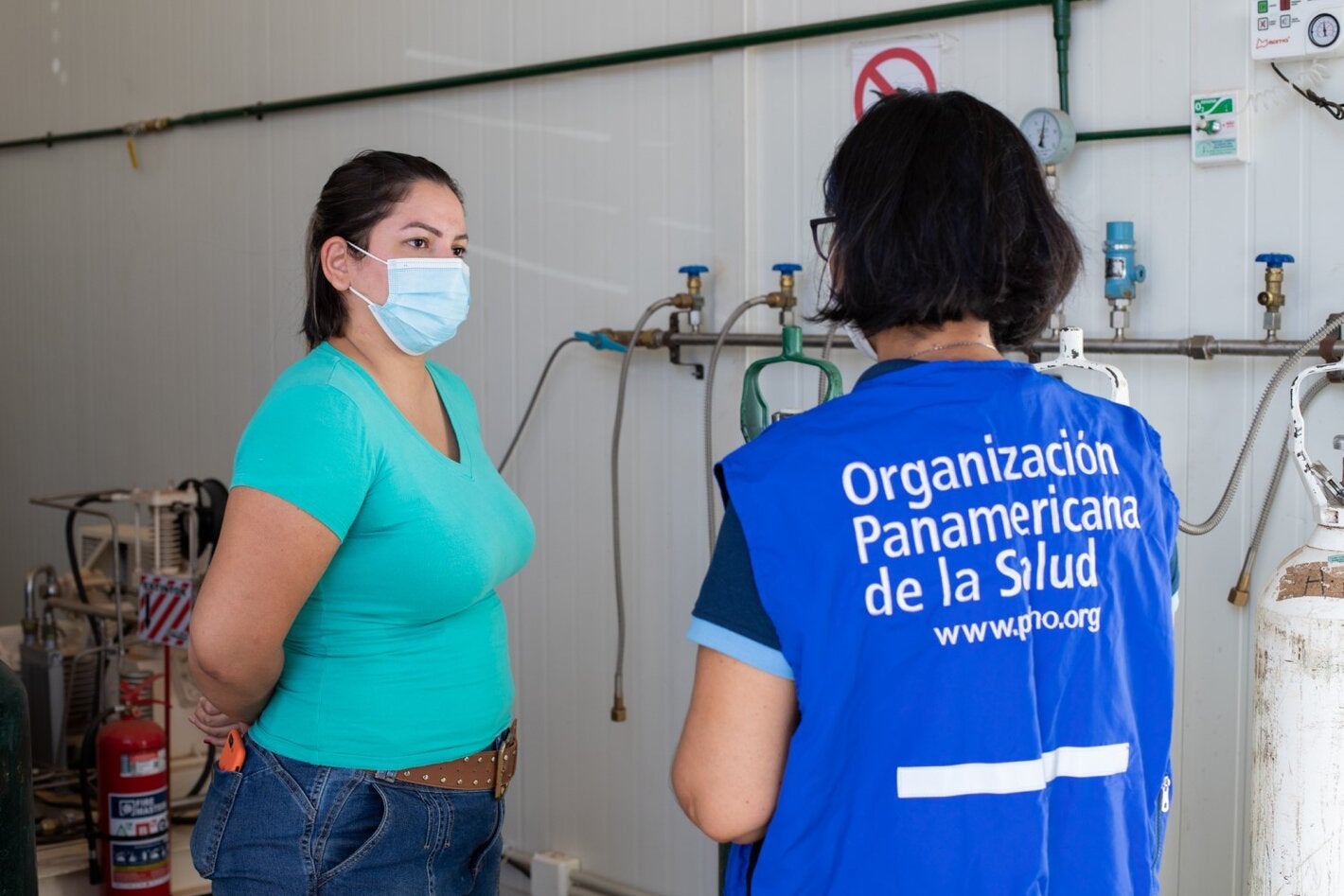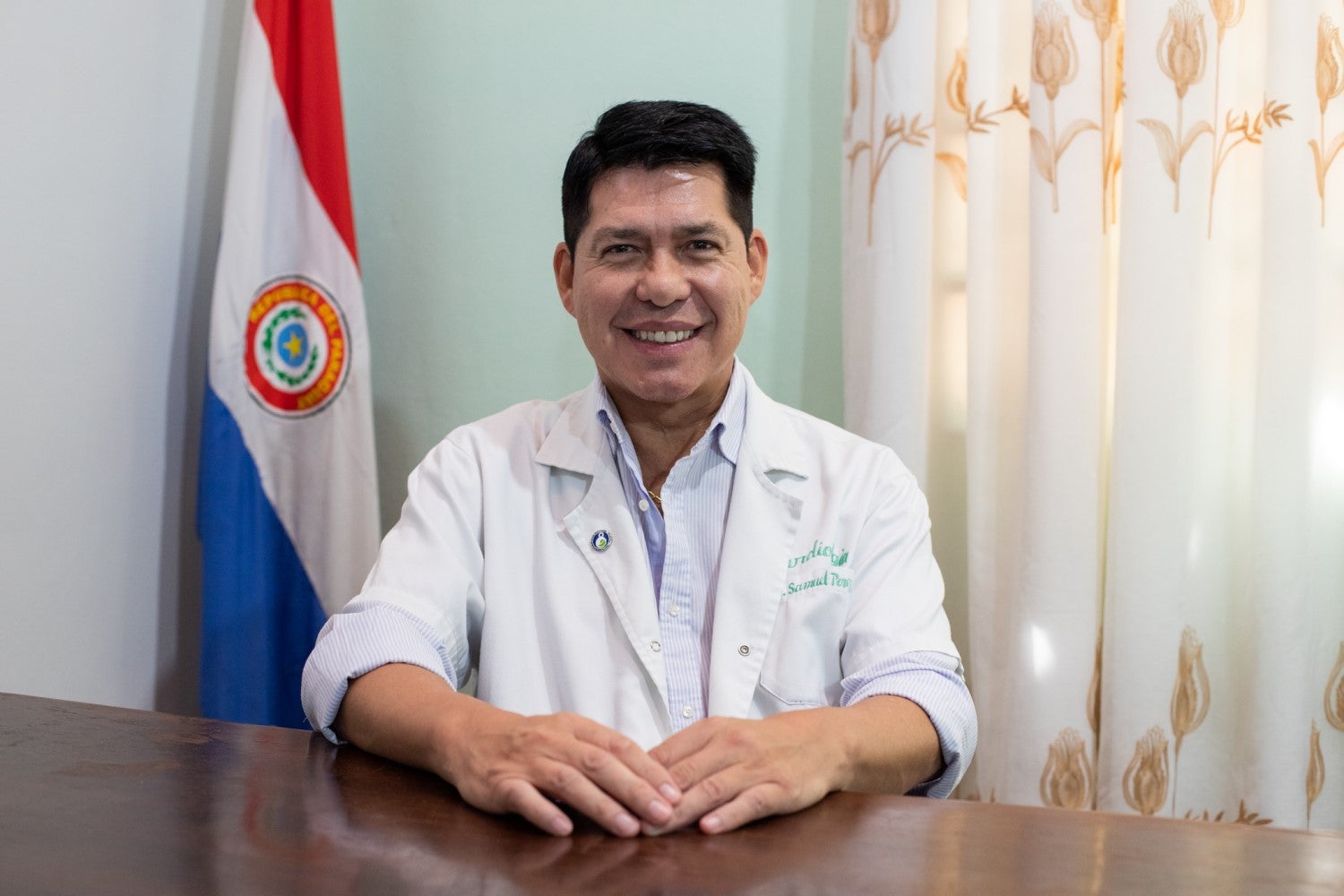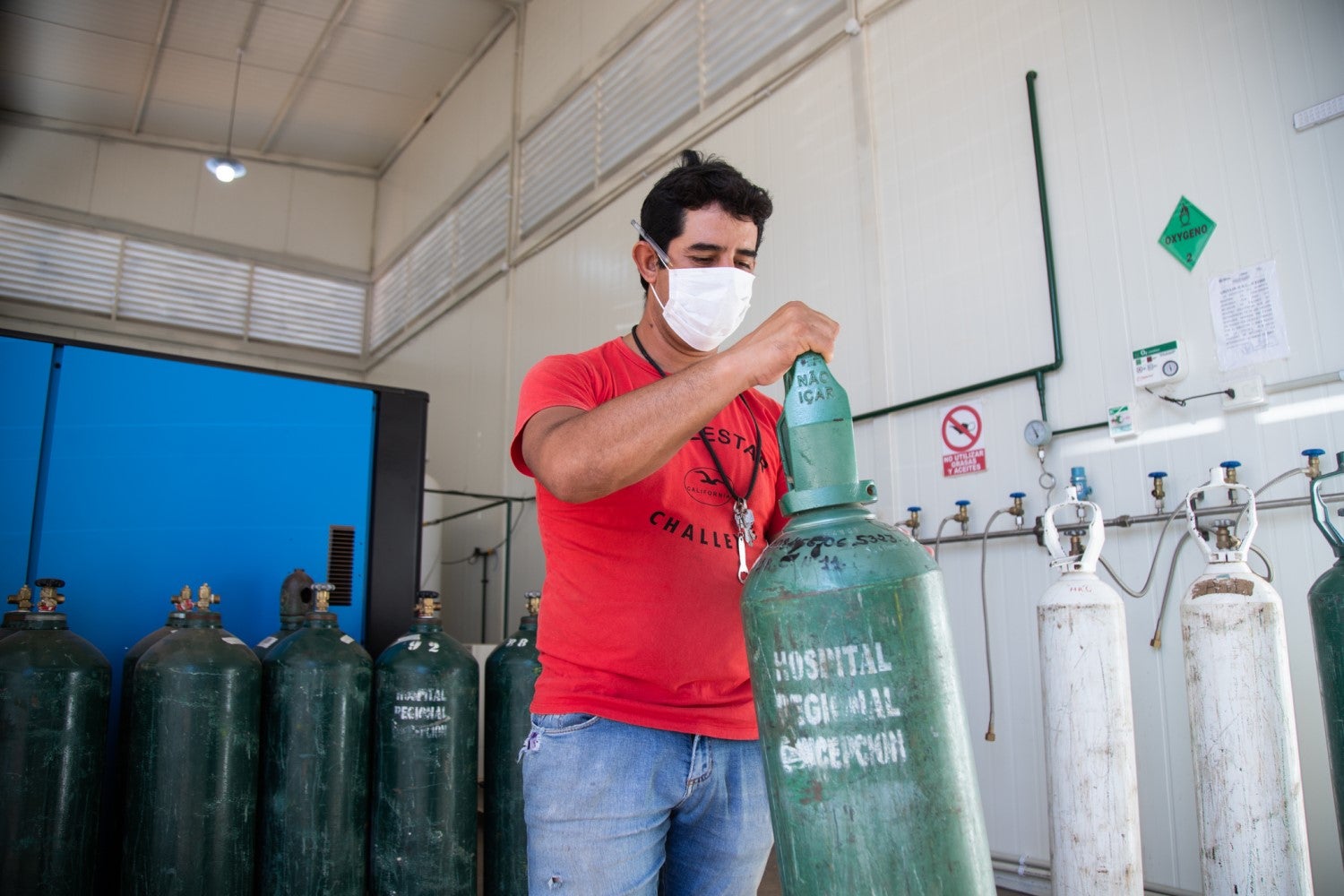Having enough medical oxygen on hand was one of the biggest challenges, even before the COVID-19 pandemic. To tackle this problem, PAHO supported the installation of two production plants in Concepción and Canindeyú that distribute oxygen to local health service networks, improving the quality of care for more than 300,000 people
Asunción, 25 March 2022 (PAHO/WHO) - Arminda Sanabria is a 96-year-old grandmother who lives in Concepción. Like many others in this part of Paraguay, she contracted coronavirus, and was left with trouble breathing. The primary care doctor prescribed oxygen, a vital resource that her granddaughter, Leticia Medina, obtains at no cost each morning, thanks to the oxygen production plant installed at the regional hospital, which enables Arminda to be treated at home.
“COVID-19 has left my grandmother with chronic obstructive pulmonary disease (COPD). But here we are, ensuring that she has adequate, affordable treatment," Leticia said.
The plant at the Regional Hospital in Concepción is one of the two facilities installed by the Pan American Health Organization (PAHO) as part of its work with the Ministry of Public Health and Social Welfare (MSPyBS) to meet the medical oxygen needs created by the pandemic and other diseases.
This is not the first time that Leticia needed medical oxygen. "During the first wave of COVID-19, my father caught the virus. We needed oxygen daily, and it was very distressing. Oxygen was growing scarce. Many people were infected, and we had to bring it in from Horqueta, a neighboring town. There were days when we had to resort to manual oxygen therapy, and we had a hard time. We also saw several families who had to sell what little they had so they could buy an oxygen balloon, refill it daily, and cover the expensive medicines that were needed," Leticia says.
Leticia, a medical student herself, recalls that "when the hospital collapsed, we were forced to buy oxygen refills from private health services. Each refill only lasted 12 hours and cost around 200,000 guaranís (US$ 56) per day."
"The oxygen production plant is a great help to the entire community,” Leticia said. “The best part is that families do not have to risk their savings.” She can now refill the oxygen balloons at zero cost.
"There is a 'before’ and an ‘after’ this plant," Leticia says. "We have been hit with a second and third wave of COVID-19, and this plant has really saved lives. My grandmother is not the only one who has been left with long-term conditions after the virus; there are other people with heart failure in addition to respiratory failure. We have all benefitted."
To obtain this vital resource, the young student says all she needs is for the physician to write her a prescription for oxygen therapy. With her two oxygen balloons, Leticia bids us "good-bye," smiling.
Oxygen that reaches throughout Concepción and the Paraguayan Chaco region
Dr. Samuel Pérez, Director of the Regional Hospital in Concepción, recounts that “the hospital's oxygen increased five-fold” during peak periods of the COVID-19 pandemic. "During the peak of admissions, we were hard-pressed to cover this need,” he added.
“Concepción was one of the departments with the highest demand for oxygen due to the number of people infected. There were only two oxygen tanks at the Regional Hospital, a 5,000-liter one and a 4,000‑liter one. While one was being filled, the other was being used to save lives," states Dr. Pérez. "We literally ran around searching for oxygen.
With the demand for oxygen rising worldwide, including in Concepción and the whole of Paraguay, the Ministry of Public Health and Social Welfare requested help from PAHO to find a solution.
"This oxygen plant is so important and radically changed the lives of Concepción residents," said Perez. “This is a regional hospital, so we receive patients from the Chaco region and all districts in Concepción. We receive patients from indigenous communities, and every day we bring eight to ten babies into the world here."
Dr. Pérez explains that they use "oxygen in the operating room, in the neonatal ward, in pediatrics, and in the maternity area. We also have patients hospitalized for different reasons and patients in the emergency department, where we still receive COVID-19 patients today, in addition to patients with multiple health issues. We treat patients with heart attacks, tuberculosis, stroke‒ all of which require oxygen.”
The oxygen plants in Concepción and the District Hospital of Curuguaty represent a total investment of US$ 1.4 million and benefit more than 300,000 people. The plants can produce 30 cubic meters of oxygen per hour (equivalent to 20 tanks), operate 24/7, and provide oxygen not only to the hospital network but to people like Arminda, who need this resource for home treatment.
PAHO provided training to Ministry of Health personnel on the use and maintenance of the two plants. The Organization also provides technical assistance to ensure the sustainability of the investment. Moreover, it is expected that in the future, the experience gained will enable Paraguay to share this experience with other countries in the Region that require this type of infrastructure.




